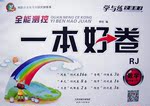题目内容
【题目】阅读下面材料,在空白处填入适当的内容(1个单词)或括号内单词的正确形式。
Ever wondered how many calories are in the human body? Or ever wondered why old people have 【1】 (big) ears than they used to? The winners of Ig Nobel Prizes (搞笑诺贝尔奖) have got the answers.
He Ig Nobel Prizes, founded in 1991, are to honor achievements 【2】 first make people laugh, and then make them think, The ceremony 【3】 ( take) place at Harvard University every year. Winners’ acceptance 【4】(speech) are limited to 60 seconds, 【5】 (strict) policed by an eight-year-old girl.
The honored research might seem ridiculous 【6】 first sight, but that doesn’t mean it lacks scientific value. For example, the research in 2006 on why dry spaghetti tends to break into more than two pieces was important 【7】 (discover) failure in bridge spans (跨度) or human bones And a follow-up paper 【8】 (publish) by MIT physicists several years later. But people are more likely to read about 【9】 (break) spaghetti than to read an academic paper. Even when there is no immediate usefulness, 【10】 is still good to encourage people to observe and think.
【答案】
【1】bigger
【2】that/ which
【3】takes
【4】speeches
【5】strictly
【6】at
【7】to discover
【8】was published
【9】breaking
【10】it
【解析】
这是一篇说明文。搞笑诺贝尔奖听起来似乎很搞笑,但是这并不意味着它缺乏科学价值。
【1】考查形容词的比较级。句意:或者想知道为什么老年人的耳朵比以前大? 根据句意和than可知这里要用形容词的比较级,故填bigger。
【2】考查限定性定语从句。分析可知空格处引导限定性定语从句,先行词为achievements,指物。空格处在句中做主语所以要用that或者which引导这个定语从句,故填that/which。
【3】考查主谓一致和时态。分析可知take在句中做谓语。这里介绍的是一般事实,要用一般现在时。主语the ceremony为单数,谓语动词也要用单数,故填takes。
【4】考查名词单复数。speech为可数名词,根据后面的are判断这里要用其复数形式,故填speeches。
【5】考查副词。空格处修饰动词police要用副词,故填strictly。
【6】考查介词。句意:乍一看,这项久享盛名的研究似乎很荒谬,但这并不意味着它缺乏科学价值。at first sight为固定搭配,意为“乍一看;一看到…就”,故填介词at。
【7】考查不定式。这里使用了sth/sb+be+adj+to do的结构,故填to discover。
【8】考查语态和时态。本句的事情已经发生,事情发生在过去要用一般过去时。谓语动词publish和主语a follow-up paper是被动关系,要用被动语态。a follow-up paper是单数,谓语动词也要用单数。故填was published。
【9】考查动名词作宾语。about为介词,后面的动词要用动名词形式,故填breaking。
【10】考查it做形式主语。句意:即使没有立竿见影的效果,鼓励人们去观察和思考也是好的。根据句意,分析可知在主句中,to encourage people to observe and think是真正的主语,要用it做形式主语,故填it。
选择关系词要考虑以下几点:
(1) 一看先行词的意义,即分清先行词是指人、指物、时间、地点还是原因(如指物时不能用who或whom,指人时通常不用which等)。
(2) 二看关系词的句法功能,即分清关系词是担任什么句子成分,是作主语还是宾语、是作定语还是状语等(如作定语通常用whose,有时也用which;作状语要用when, where, why等关系副词。
(3) 三看定语从句的种类,即分清是限制性定语从句还是非限制性定语从句(如that和why通常不引导非限制性定语从句)。
本文第2小题,分析可知空格处引导限定性定语从句,先行词为achievements,指物。空格处在句中做主语,根据语法规则要用that或者which引导这个定语从句,故填that/which。

 全能测控一本好卷系列答案
全能测控一本好卷系列答案